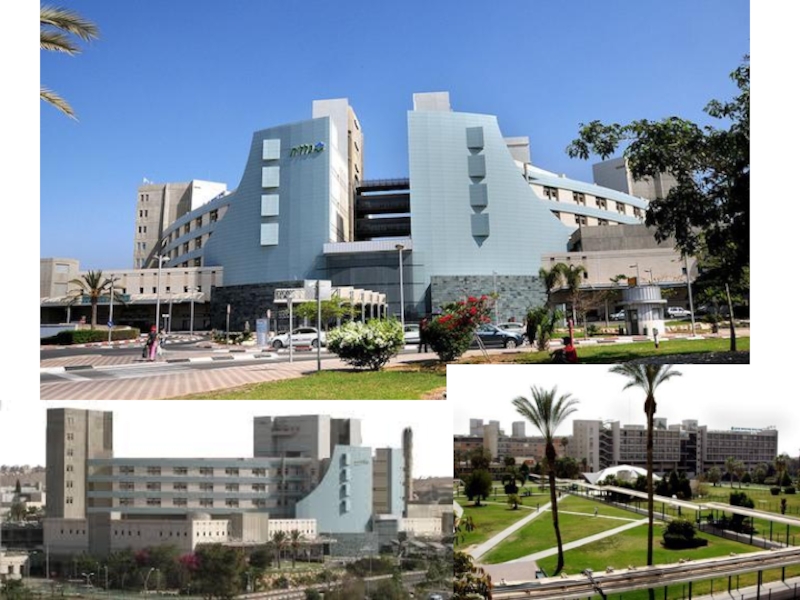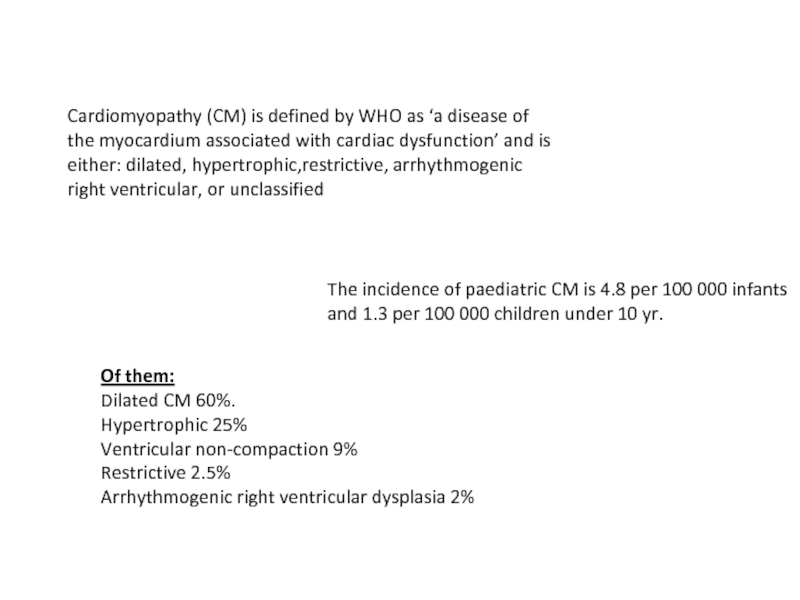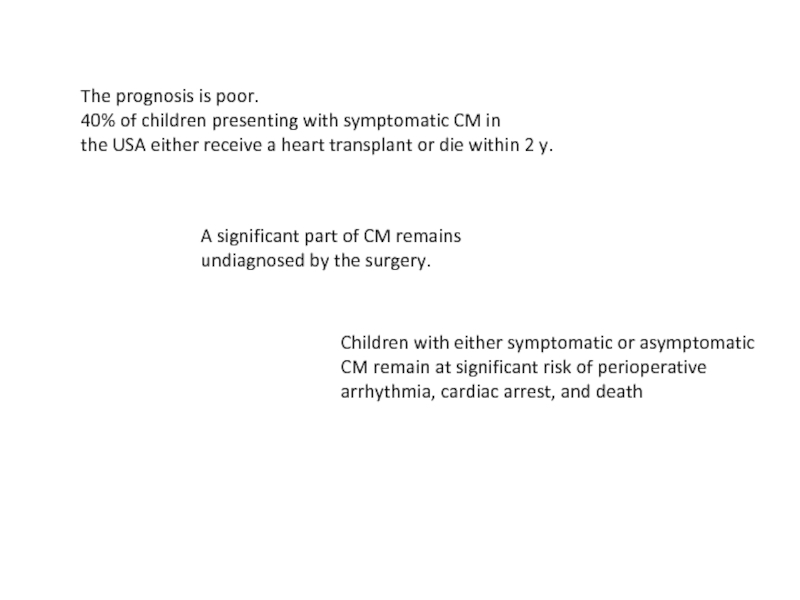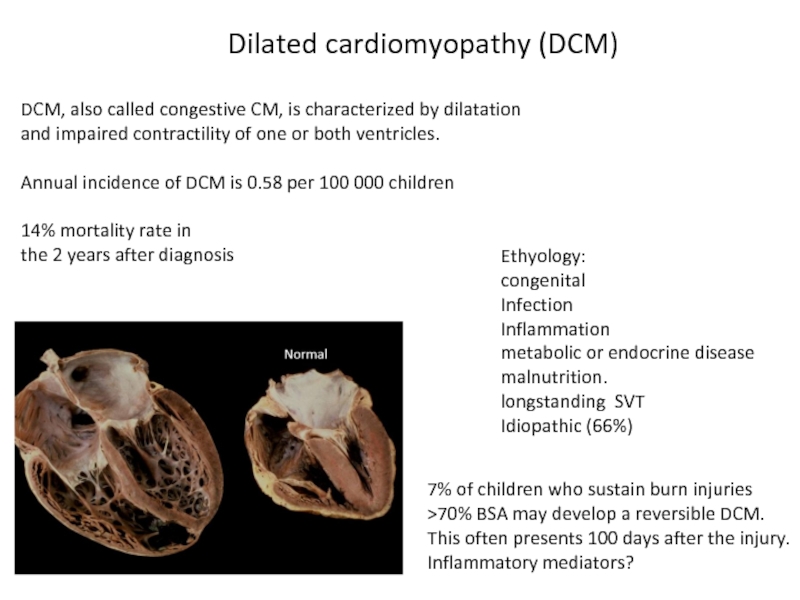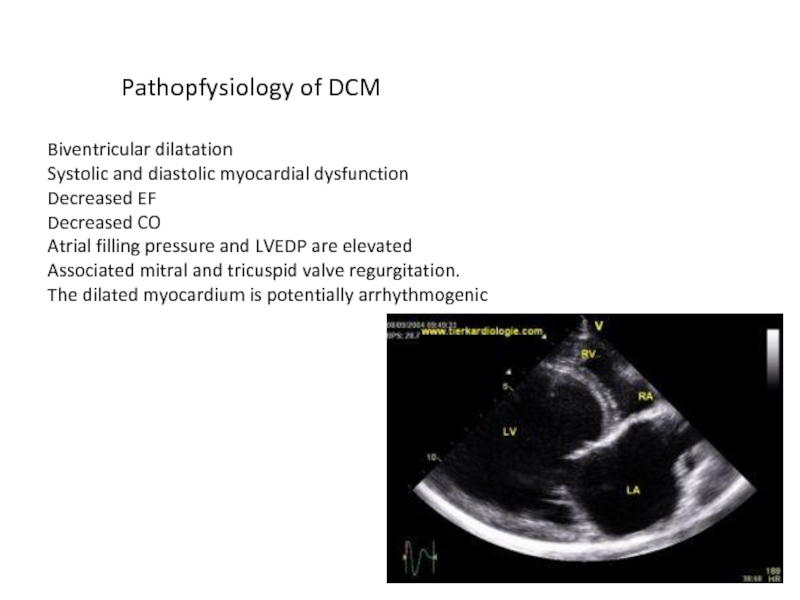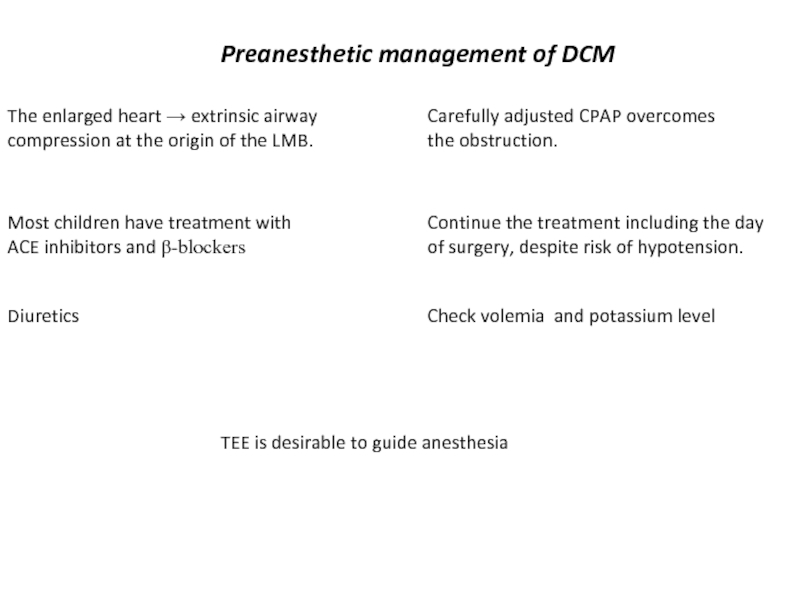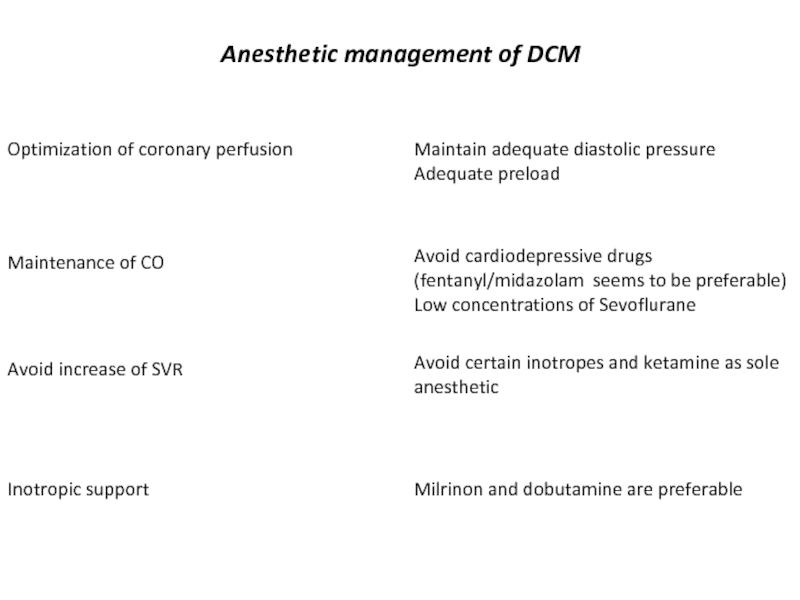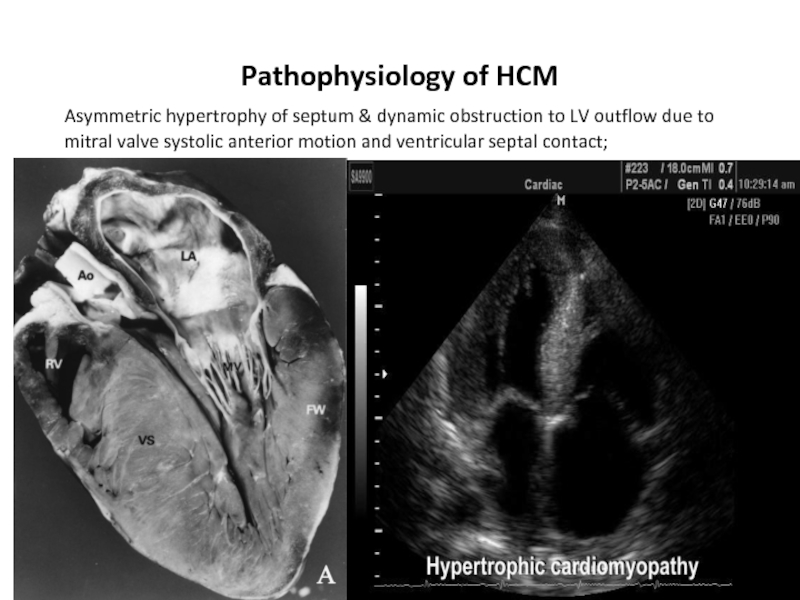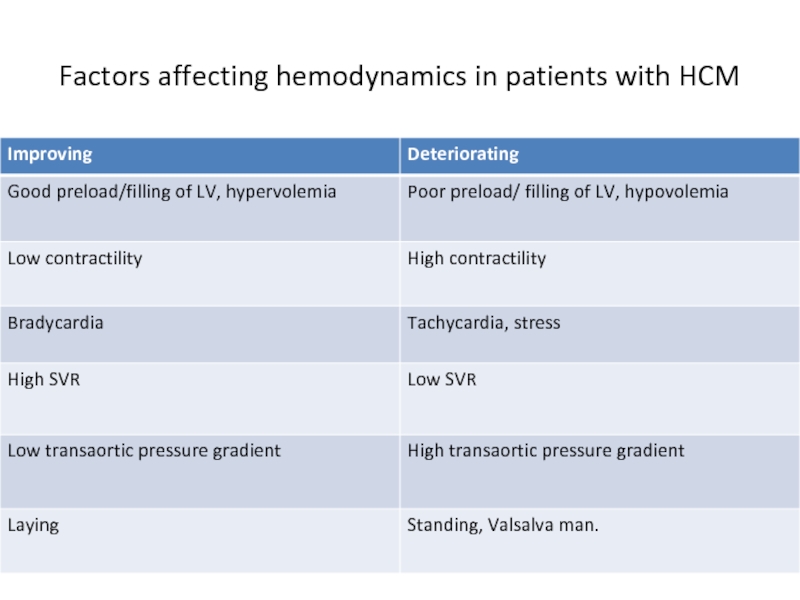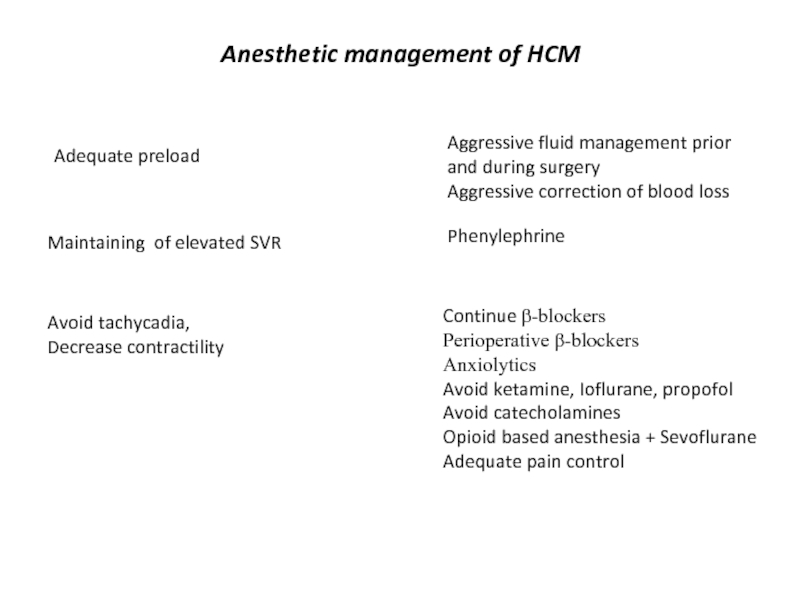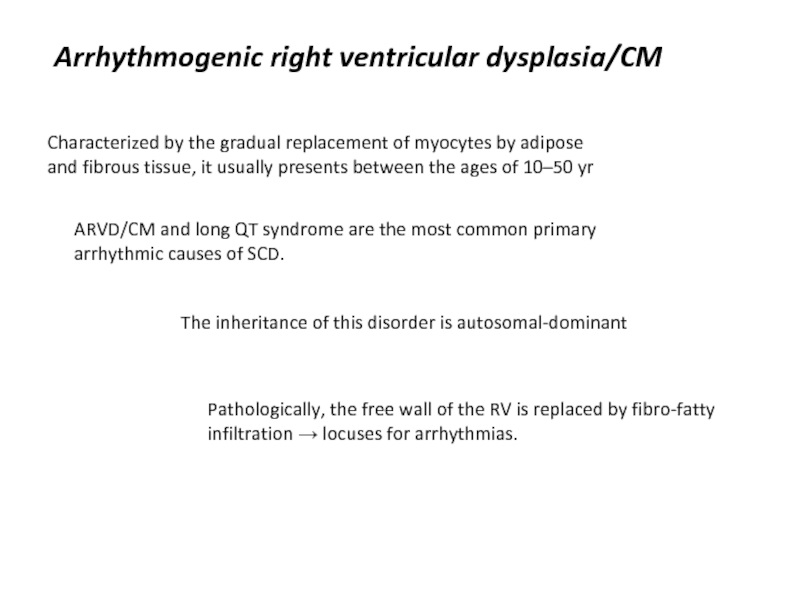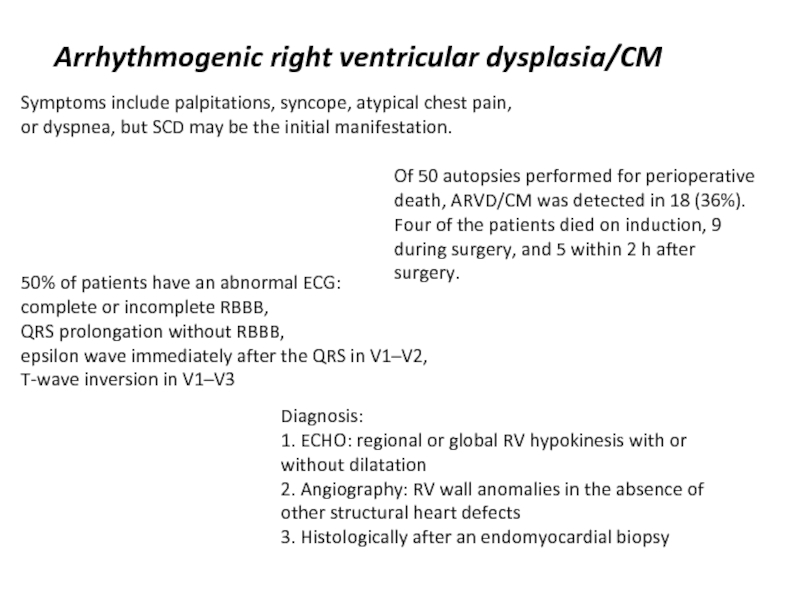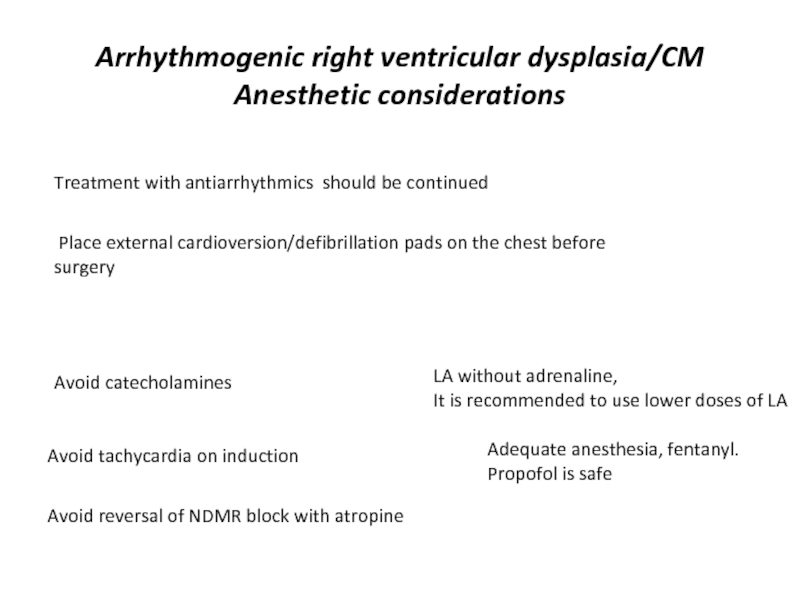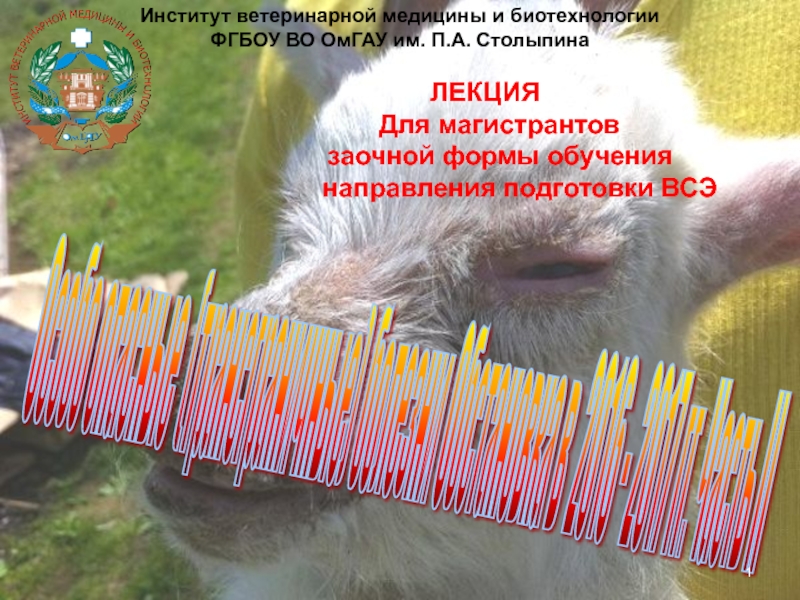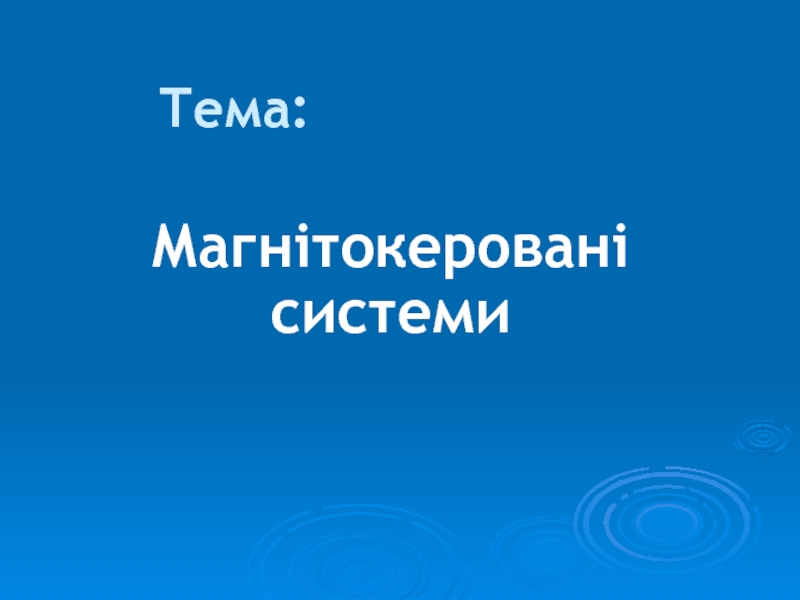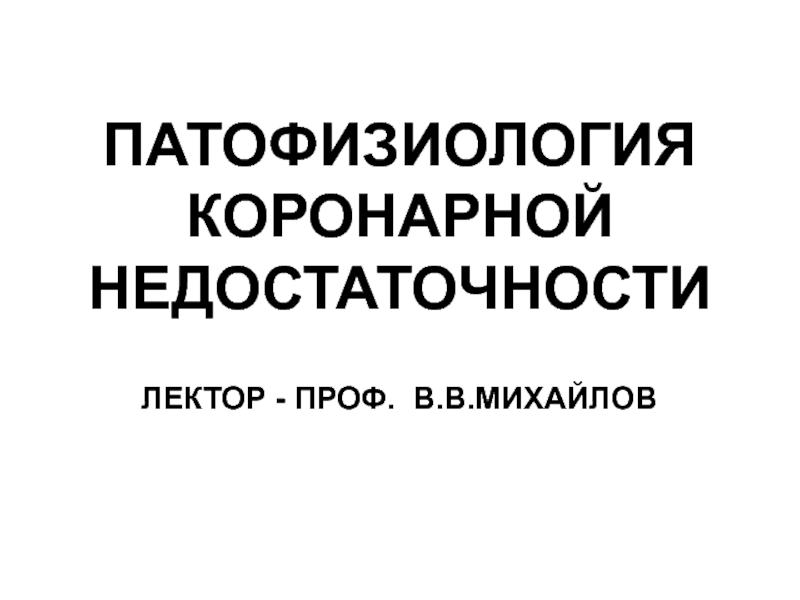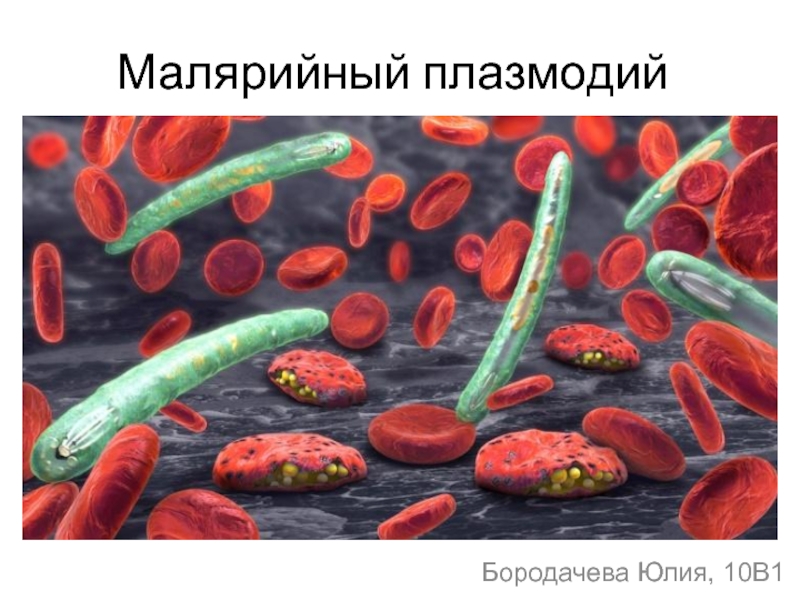- Главная
- Разное
- Дизайн
- Бизнес и предпринимательство
- Аналитика
- Образование
- Развлечения
- Красота и здоровье
- Финансы
- Государство
- Путешествия
- Спорт
- Недвижимость
- Армия
- Графика
- Культурология
- Еда и кулинария
- Лингвистика
- Английский язык
- Астрономия
- Алгебра
- Биология
- География
- Детские презентации
- Информатика
- История
- Литература
- Маркетинг
- Математика
- Медицина
- Менеджмент
- Музыка
- МХК
- Немецкий язык
- ОБЖ
- Обществознание
- Окружающий мир
- Педагогика
- Русский язык
- Технология
- Физика
- Философия
- Химия
- Шаблоны, картинки для презентаций
- Экология
- Экономика
- Юриспруденция
Pediatric cardiomyopathy and anesthesia презентация
Содержание
- 1. Pediatric cardiomyopathy and anesthesia
- 3. Cardiomyopathy (CM) is defined by WHO as
- 4. The prognosis is poor. 40% of children
- 5. Dilated cardiomyopathy (DCM) DCM, also called congestive
- 6. Pathopfysiology of DCM Biventricular dilatation Systolic and
- 7. Preanesthetic management of DCM The enlarged heart
- 8. Anesthetic management of DCM Optimization of coronary
- 9. Hypertrophic cardiomyopathy HCM More common in adults,
- 10. Pathophysiology of HCM Asymmetric
- 12. Factors affecting hemodynamics in patients with HCM
- 13. Anesthetic management of HCM Maintaining of elevated
- 14. Restrictive cardiomyopathy RCM RCM - cardiac muscle
- 15. Restrictive cardiomyopathy Anesthetic considerations Due to stiffness
- 16. Arrhythmogenic right ventricular dysplasia/CM Characterized by the
- 17. Arrhythmogenic right ventricular dysplasia/CM Symptoms include palpitations,
- 18. Arrhythmogenic right ventricular dysplasia/CM Anesthetic considerations Avoid
- 19. Thank you!
Слайд 1Pediatric Cardiomyopathy and Anesthesia
Alexander Zlotnik MD, PhD
Professor and Chairman,
Soroka University Medical
Ben Gurion University of the Negev
Beer Sheva,
Israel
Слайд 3Cardiomyopathy (CM) is defined by WHO as ‘a disease of the
The incidence of paediatric CM is 4.8 per 100 000 infants
and 1.3 per 100 000 children under 10 yr.
Of them:
Dilated CM 60%.
Hypertrophic 25%
Ventricular non-compaction 9%
Restrictive 2.5%
Arrhythmogenic right ventricular dysplasia 2%
Слайд 4The prognosis is poor.
40% of children presenting with symptomatic CM in
the
Children with either symptomatic or asymptomatic CM remain at significant risk of perioperative arrhythmia, cardiac arrest, and death
A significant part of CM remains undiagnosed by the surgery.
Слайд 5Dilated cardiomyopathy (DCM)
DCM, also called congestive CM, is characterized by dilatation
and
Annual incidence of DCM is 0.58 per 100 000 children
14% mortality rate in
the 2 years after diagnosis
Ethyology:
congenital
Infection
Inflammation
metabolic or endocrine disease
malnutrition.
longstanding SVT
Idiopathic (66%)
7% of children who sustain burn injuries >70% BSA may develop a reversible DCM.
This often presents 100 days after the injury.
Inflammatory mediators?
Слайд 6Pathopfysiology of DCM
Biventricular dilatation
Systolic and diastolic myocardial dysfunction
Decreased EF
Decreased CO
Atrial filling
Associated mitral and tricuspid valve regurgitation.
The dilated myocardium is potentially arrhythmogenic
Слайд 7Preanesthetic management of DCM
The enlarged heart → extrinsic airway compression at
Carefully adjusted CPAP overcomes
the obstruction.
Most children have treatment with ACE inhibitors and β-blockers
Continue the treatment including the day of surgery, despite risk of hypotension.
Diuretics
Check volemia and potassium level
TEE is desirable to guide anesthesia
Слайд 8Anesthetic management of DCM
Optimization of coronary perfusion
Maintain adequate diastolic pressure
Adequate preload
Maintenance
Avoid cardiodepressive drugs
(fentanyl/midazolam seems to be preferable)
Low concentrations of Sevoflurane
Avoid increase of SVR
Avoid certain inotropes and ketamine as sole anesthetic
Inotropic support
Milrinon and dobutamine are preferable
Слайд 9Hypertrophic cardiomyopathy HCM
More common in adults, the incidence is low in
children
As patients can be asymptomatic, the diagnosis is often PM
A focal area of hypertrophy may also incorporate and surround a coronary vessel, so-called myocardial bridging → significant coronary hypoperfusion → risk of sudden death.
Слайд 10Pathophysiology of HCM
Asymmetric hypertrophy of septum & dynamic
Слайд 13Anesthetic management of HCM
Maintaining of elevated SVR
Phenylephrine
Adequate preload
Aggressive fluid management
Aggressive correction of blood loss
Avoid tachycadia,
Decrease contractility
Continue β-blockers
Perioperative β-blockers
Anxiolytics
Avoid ketamine, Ioflurane, propofol
Avoid catecholamines
Opioid based anesthesia + Sevoflurane
Adequate pain control
Слайд 14Restrictive cardiomyopathy RCM
RCM - cardiac muscle disease resulting in
impaired ventricular filling
The condition usually results from increased stiffness of the myocardium
Progressive increase in PVR, due to blood flow to non-compliant LV, results in early mortality.
RCM has a 2 yr survival, once diagnosed, of 50%
Severe changes in pulmonary vasculature prohibits heart transplant alone and a heart –lung transplant is the only
alternative.
ECHO diagnosis of RCM:
Small ventricles + massively dilated atria + elevated PAP
Слайд 15Restrictive cardiomyopathy
Anesthetic considerations
Due to stiffness of myocardium , CO depends on
Avoid bradycardia (fentanyl, penylephrine)
Maintain adequate preload
Fluid management, aggressive treatment of bleeding
Avoid increase of PVR
Avoid hypoxia, hypercarbia, hypothermia,
elevated airway pressure
If inotropes needed
Milrinone and dobutamine
Слайд 16Arrhythmogenic right ventricular dysplasia/CM
Characterized by the gradual replacement of myocytes by
ARVD/CM and long QT syndrome are the most common primary arrhythmic causes of SCD.
The inheritance of this disorder is autosomal-dominant
Pathologically, the free wall of the RV is replaced by fibro-fatty infiltration → locuses for arrhythmias.
Слайд 17Arrhythmogenic right ventricular dysplasia/CM
Symptoms include palpitations, syncope, atypical chest pain, or
50% of patients have an abnormal ECG:
complete or incomplete RBBB,
QRS prolongation without RBBB,
epsilon wave immediately after the QRS in V1–V2,
T-wave inversion in V1–V3
Diagnosis:
1. ECHO: regional or global RV hypokinesis with or without dilatation
2. Angiography: RV wall anomalies in the absence of other structural heart defects
3. Histologically after an endomyocardial biopsy
Of 50 autopsies performed for perioperative death, ARVD/CM was detected in 18 (36%). Four of the patients died on induction, 9 during surgery, and 5 within 2 h after surgery.
Слайд 18Arrhythmogenic right ventricular dysplasia/CM
Anesthetic considerations
Avoid catecholamines
LA without adrenaline,
It is recommended to
Avoid tachycardia on induction
Adequate anesthesia, fentanyl.
Propofol is safe
Avoid reversal of NDMR block with atropine
Treatment with antiarrhythmics should be continued
Place external cardioversion/defibrillation pads on the chest before surgery

